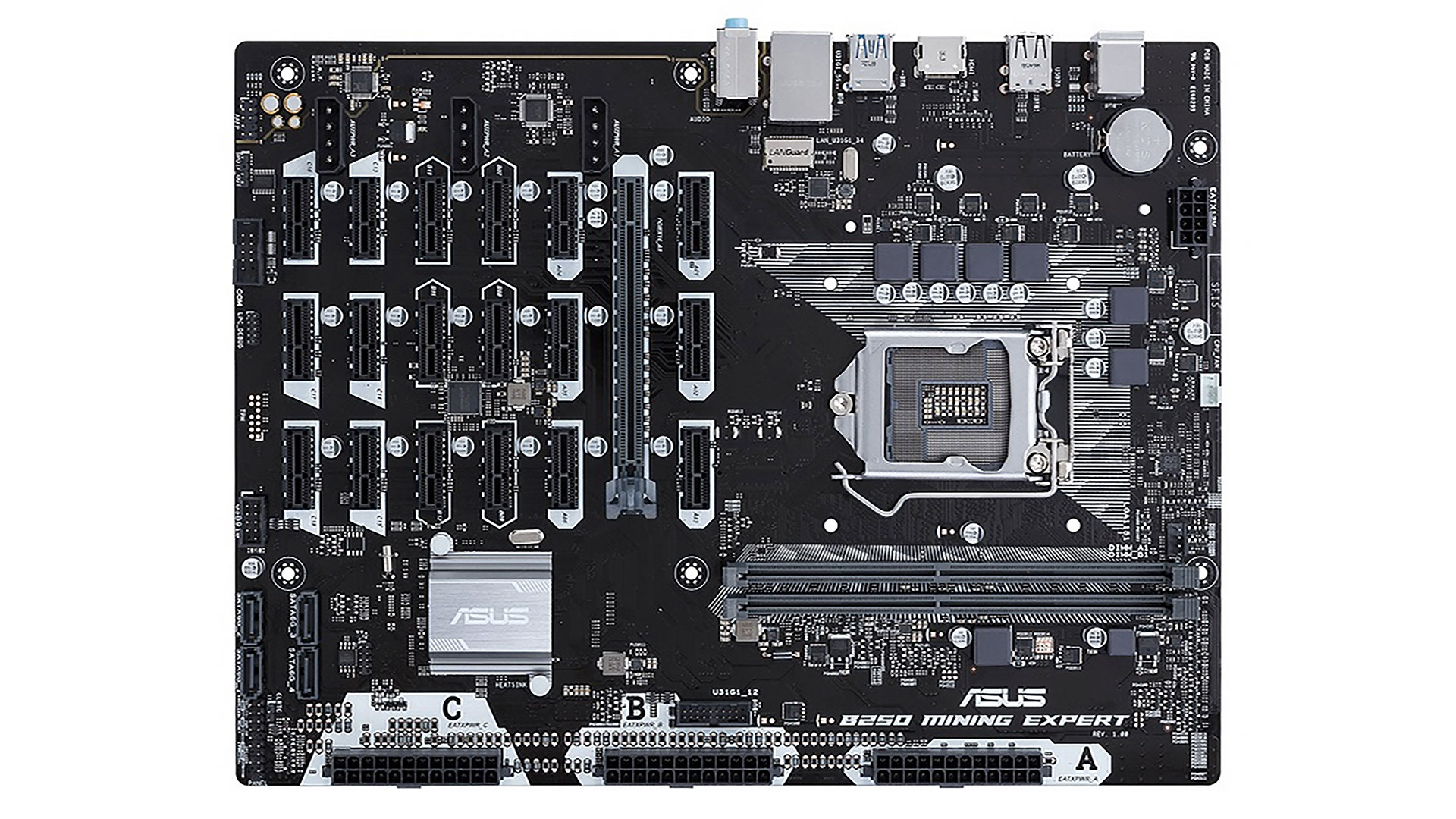Asus has a motherboard that supports up to 19 GPUs
A cost-effective solution for cryptocurrency mining—or other purposes.

We've seen plenty of mining-centric hardware of late, fueling the cryptocurrency craze. Biostar has its TB250-BTC Pro with 12 PCIe slots (11 x1 and one x16), and the ASRock H110 Pro BTC+ gets the plus-one treatment with 13 PCIe slots. Asus is looking to leave both solutions in its wake with its upcoming B2560 Mining Expert, a board with 18 PCIe x1 slots plus a physical x16 slot. With the ability to theoretically support 19 graphics cards, though note that current AMD and Nvidia drivers only support up to eight GPUs in a system, there's a problem in providing sufficient power, and Asus tackles that hurdle by including three 24-pin ATX connectors on the board.
The primary 24-pin connector serves up power for the main aspects of the board, including the chipset and USB ports, and the additional two connectors help supply all the extra PCIe slots with power. There are also three 4-pin Molex connectors in the vicinity of the PCIe x1 apartment complex for good measure. The design makes it simple to connect three PSUs without resorting to potentially hazardous PSU jumpers—all three power supplies come online with a single press of the power button. Strangely however, considering the mining focus, there's no on-board power or reset buttons, which would be a good addition for this sort of product.
In case it's not abundantly clear, the purpose of a motherboard like this is to help reduce the cost of the various extras needed to build a mining PC. The graphics cards do the real work, but with most motherboards you're limited to six, perhaps seven PCIe slots at most. That means you need to add an extra CPU, motherboard, memory, and storage for every six or so GPUs. That adds to the financial investment, and you could save about $600 by consolidating three rigs into one.
Of course figuring out how to best connect 19 cards to a single board is no small task. You'll want some extra-long PCIe riser cables (maybe 100cm?), a healthy dose of planning, and a dash of creativity. Bake for 30 minutes or until your mining rig has reached a fluffy golden texture. Clearly, GPU-based mining isn't set to disappear anytime soon, though there's still the question of long-term profitability. The good news is that this sort of motherboard could also be used for other GPU-compute purposes, including SETI@Home, Folding@Home, or even machine learning. Hail, Skynet!
Demand for mainstream graphics cards remains high, with prices still well above MSRP. Mainstream GPUs, or at least GPUs that require at most a single 8-pin PEG connector, are the primary target, since most PSUs don't have enough PEG connectors to handle more than four cards with dual PEG power connectors. That's something else you'll have to consider when attempting to connect eight Nvidia and eight AMD GPUs to this motherboard.
Of course, stuffing tons of GPUs into a PC doesn't change the bottom line. RX 570/580 and GTX 1060 are now trending toward $1.50 per day in profit, and GTX 1070 is around $2 per day—all are far less attractive than the $4-$5 per day of a couple months back. If this board had been available in May or June, demand would have been far greater. But then, we've probably not heard the last of GPU prices being affected by mining.
Unofficially, the B250 Mining Expert will go on sale in the next few weeks, with a budget-friendly price south of $150.
Keep up to date with the most important stories and the best deals, as picked by the PC Gamer team.
Jarred's love of computers dates back to the dark ages when his dad brought home a DOS 2.3 PC and he left his C-64 behind. He eventually built his first custom PC in 1990 with a 286 12MHz, only to discover it was already woefully outdated when Wing Commander was released a few months later. He holds a BS in Computer Science from Brigham Young University and has been working as a tech journalist since 2004, writing for AnandTech, Maximum PC, and PC Gamer. From the first S3 Virge '3D decelerators' to today's GPUs, Jarred keeps up with all the latest graphics trends and is the one to ask about game performance.


